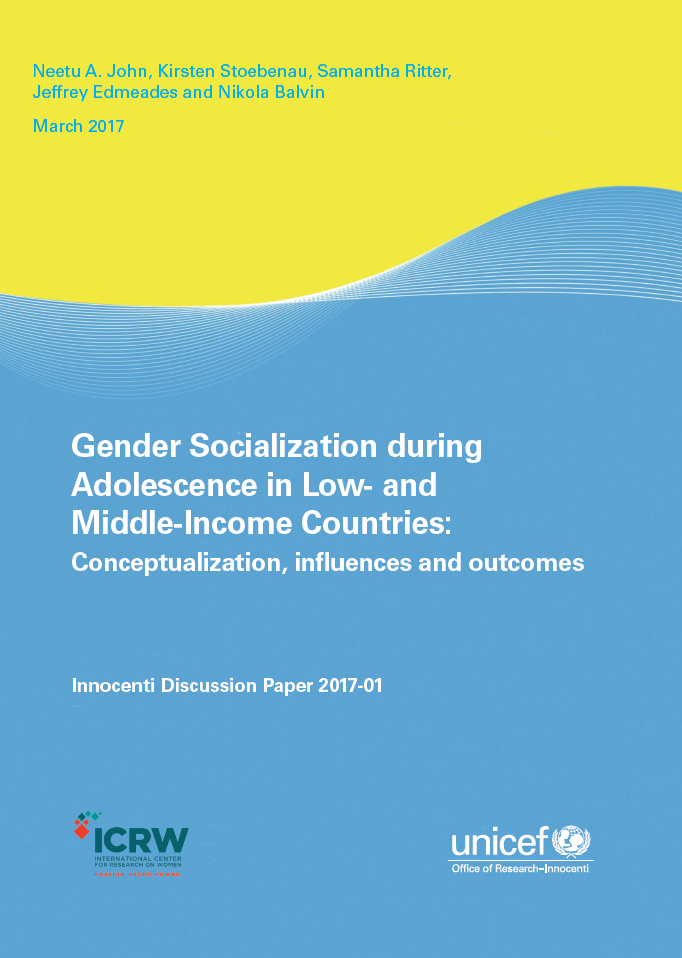Gender Socialization during Adolescence in Low- and Middle-Income Countries : Conceptualization, influences and outcomes
Date
2017Author
John, Neetu A.
Stoebenau, Kirsten
Ritter, Samantha
Edmeades, Jeffrey
Balvin, Nikola
UNICEF. Office of Research-Innocenti
Metadata
Show full item recordAbstract
Adolescence is a critical period in the development of gender attitudes and behaviours, which have potentially life-long effects.The rapid changes that take place during adolescence provide opportunities for the development and implementation of policies and programmes, which can influence the gender socialization process, in order to maximize positive outcomes.This paper set out to provide a conceptual understanding of the gender socialization process during adolescence, its influences and outcomes, and practical suggestions on how to use this knowledge in the design of policies and programmes to improve gender equality. First, theoretical contributions from psychology, sociology and biology were reviewed to situate the gender socialization process during adolescence in a broader context of multi-level influences. Second, a socio-ecological framework was introduced to bring together the main factors that influence the gender socialization process and its outcomes.Third, knowledge on how to influence the gender socialization process and its outcomes was summarized in order to provide practical recommendations for policies and programmes.This included: a) reviewing changes in demographics, the global media and gendered economic opportunities, to understand how the gender socialization process, gender norms and
identities have been transformed at the macro level; and b) conducting a literature review of smallscale programmes designed to impact the gender socialization process.The literature review identified 31 programmes grouped around three broad strategies: 1) empowering young people (mainly girls) with information, skills, and social support to challenge norms; 2) fostering an enabling environment in which to challenge gender norms; and 3) working with men and boys, including directly with young individuals and with influential males to change attitudes and beliefs The paper concludes with recommendations for more holistic policy and programming efforts around gender socialization in adolescence.


